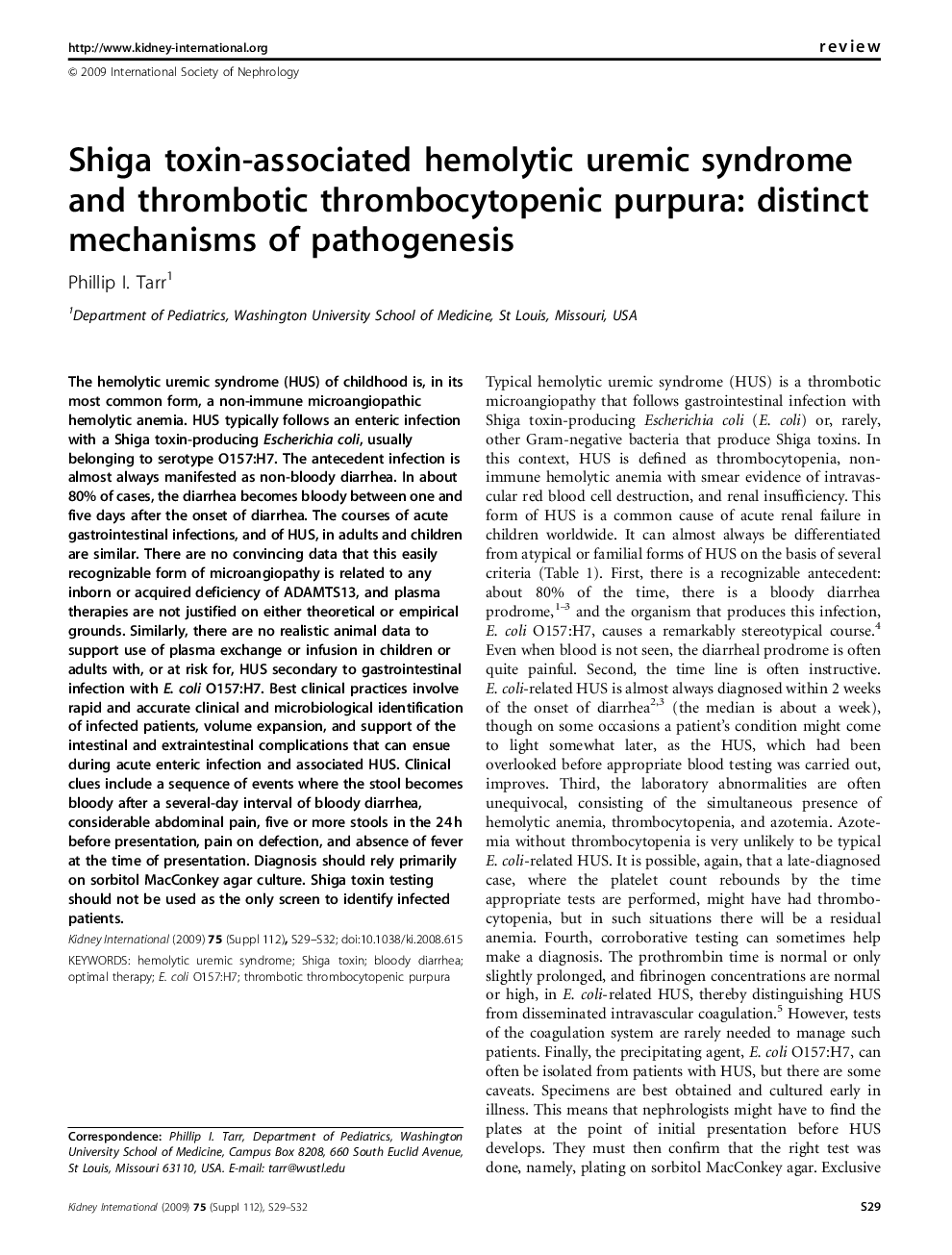| کد مقاله | کد نشریه | سال انتشار | مقاله انگلیسی | نسخه تمام متن |
|---|---|---|---|---|
| 8773367 | 1599158 | 2009 | 6 صفحه PDF | دانلود رایگان |
عنوان انگلیسی مقاله ISI
Shiga toxin-associated hemolytic uremic syndrome and thrombotic thrombocytopenic purpura: distinct mechanisms of pathogenesis
دانلود مقاله + سفارش ترجمه
دانلود مقاله ISI انگلیسی
رایگان برای ایرانیان
کلمات کلیدی
موضوعات مرتبط
علوم پزشکی و سلامت
پزشکی و دندانپزشکی
بیماریهای کلیوی
پیش نمایش صفحه اول مقاله

چکیده انگلیسی
The hemolytic uremic syndrome (HUS) of childhood is, in its most common form, a non-immune microangiopathic hemolytic anemia. HUS typically follows an enteric infection with a Shiga toxin-producing Escherichia coli, usually belonging to serotype O157:H7. The antecedent infection is almost always manifested as non-bloody diarrhea. In about 80% of cases, the diarrhea becomes bloody between one and five days after the onset of diarrhea. The courses of acute gastrointestinal infections, and of HUS, in adults and children are similar. There are no convincing data that this easily recognizable form of microangiopathy is related to any inborn or acquired deficiency of ADAMTS13, and plasma therapies are not justified on either theoretical or empirical grounds. Similarly, there are no realistic animal data to support use of plasma exchange or infusion in children or adults with, or at risk for, HUS secondary to gastrointestinal infection with E. coli O157:H7. Best clinical practices involve rapid and accurate clinical and microbiological identification of infected patients, volume expansion, and support of the intestinal and extraintestinal complications that can ensue during acute enteric infection and associated HUS. Clinical clues include a sequence of events where the stool becomes bloody after a several-day interval of bloody diarrhea, considerable abdominal pain, five or more stools in the 24âh before presentation, pain on defection, and absence of fever at the time of presentation. Diagnosis should rely primarily on sorbitol MacConkey agar culture. Shiga toxin testing should not be used as the only screen to identify infected patients.
ناشر
Database: Elsevier - ScienceDirect (ساینس دایرکت)
Journal: Kidney International - Volume 75, Supplement 112, February 2009, Pages S29-S32
Journal: Kidney International - Volume 75, Supplement 112, February 2009, Pages S29-S32
نویسندگان
Phillip I Tarr,